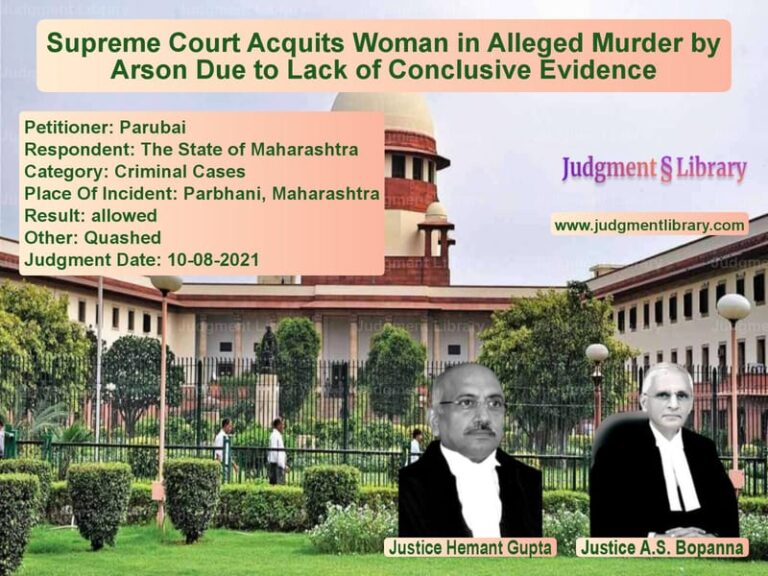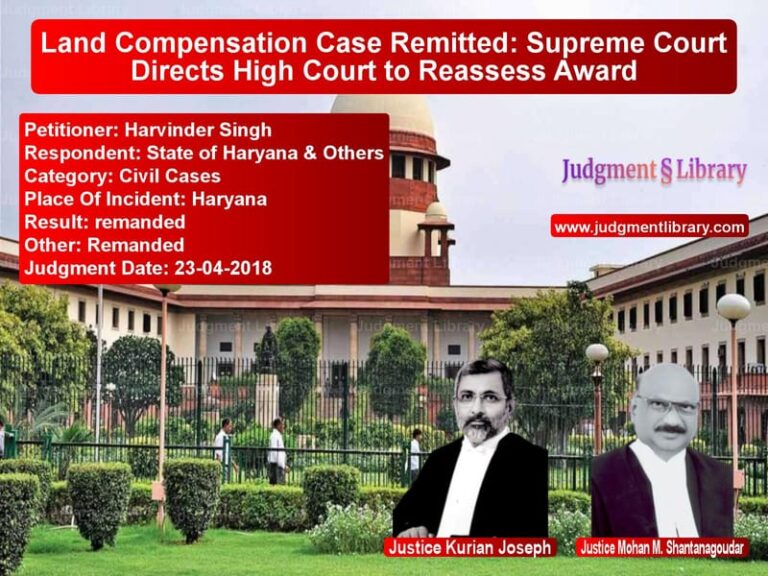Supreme Court Rules on Ex Post Facto Environmental Clearances: Impact on Industrial Compliance
The Supreme Court of India, in the case of Alembic Pharmaceuticals Ltd. vs. Rohit Prajapati & Ors., has delivered a landmark ruling on the issue of ex post facto environmental clearances. The judgment addresses whether industries operating without prior environmental clearance (EC) under the Environment Impact Assessment (EIA) Notification, 1994 could later obtain approvals through government circulars.
Background of the Case
The matter arose when the National Green Tribunal (NGT) quashed a circular issued by the Ministry of Environment and Forests (MoEF) on May 14, 2002. The circular extended the deadline for obtaining environmental clearance for industries operating without it. The NGT ruled that such ex post facto clearances were contrary to law and directed the closure of units operating without prior ECs, alongside levying penalties for environmental degradation.
Several industrial units, including Alembic Pharmaceuticals Ltd., challenged this decision before the Supreme Court, arguing that the circular was valid and that they had obtained subsequent environmental clearances.
Key Legal Issues Raised
- Is an ex post facto environmental clearance legally valid?
- Can an administrative circular override the statutory requirement for prior EC under the EIA Notification, 1994?
- What should be the consequences for industries that operated without prior environmental clearance?
Arguments by the Appellants (Industries)
The industries contended:
- The circular dated May 14, 2002, provided a mechanism for obtaining ECs retrospectively, preventing mass closure of industries and economic losses.
- They had obtained all necessary consents and authorizations from the Gujarat Pollution Control Board (GPCB) before commencing operations.
- The ex post facto clearance regime was permitted by the MoEF and had been granted in multiple cases in the past.
- The EIA Notification, 1994, did not explicitly mandate a “prior” environmental clearance, unlike the EIA Notification, 2006, which specifically used the term “prior”.
Arguments by the Respondents (Environmental Activists & MoEF)
The respondents, including environmental activists, countered:
- The principle of prior environmental clearance was fundamental to environmental law and could not be retrospectively relaxed.
- Ex post facto approvals violated the precautionary principle and could encourage industries to bypass compliance.
- The industrial units had knowingly violated the EIA Notification, 1994, and were trying to regularize their illegal operations.
- The circular of May 14, 2002, lacked statutory backing and could not override binding environmental laws.
Supreme Court’s Observations and Ruling
The Supreme Court held:
- Ex post facto environmental clearances are legally unsustainable. The concept is alien to environmental jurisprudence and contrary to the precautionary principle.
- The EIA Notification, 1994, though not explicitly mentioning “prior” EC, clearly implied that no industrial activity could commence without obtaining an EC.
- The May 14, 2002, circular could not override the statutory notification and was therefore invalid.
- Industries that operated without ECs had violated the law and must be held accountable.
- However, considering the economic and employment impact, the Court did not order closure of industries but imposed heavy penalties.
Key Takeaways from the Judgment
- Strict Compliance with Environmental Laws: Industries must obtain prior ECs before commencing operations.
- Precedence of Environmental Statutes over Administrative Circulars: No government circular can override statutory environmental laws.
- Balanced Approach: The Court imposed penalties but refrained from ordering industry closures, balancing environmental and economic concerns.
- Restitution for Environmental Damage: The penalties imposed will be used for restoring ecological balance in affected areas.
Conclusion
This ruling is a major milestone in environmental law enforcement. It reinforces the necessity of obtaining environmental clearance before setting up industrial units and sends a strong message against regulatory bypasses. While providing relief from closure to industries, the Court’s decision ensures that non-compliance does not go unpunished.
The judgment is expected to shape future policies and regulatory frameworks to ensure that industries adhere to environmental norms without seeking retrospective legal cover for violations.
Petitioner Name: Alembic Pharmaceuticals Ltd..Respondent Name: Rohit Prajapati & Ors..Judgment By: Justice Dhananjaya Y Chandrachud, Justice Ajay Rastogi.Place Of Incident: Ankleshwar, Gujarat.Judgment Date: 01-04-2020.
Don’t miss out on the full details! Download the complete judgment in PDF format below and gain valuable insights instantly!
Download Judgment: Alembic Pharmaceutic vs Rohit Prajapati & Or Supreme Court of India Judgment Dated 01-04-2020.pdf
Direct Downlaod Judgment: Direct downlaod this Judgment
See all petitions in Environmental Cases
See all petitions in Public Interest Litigation
See all petitions in Company Law
See all petitions in Judgment by Dhananjaya Y Chandrachud
See all petitions in Judgment by Ajay Rastogi
See all petitions in partially allowed
See all petitions in Modified
See all petitions in supreme court of India judgments April 2020
See all petitions in 2020 judgments
See all posts in Environmental Cases Category
See all allowed petitions in Environmental Cases Category
See all Dismissed petitions in Environmental Cases Category
See all partially allowed petitions in Environmental Cases Category







